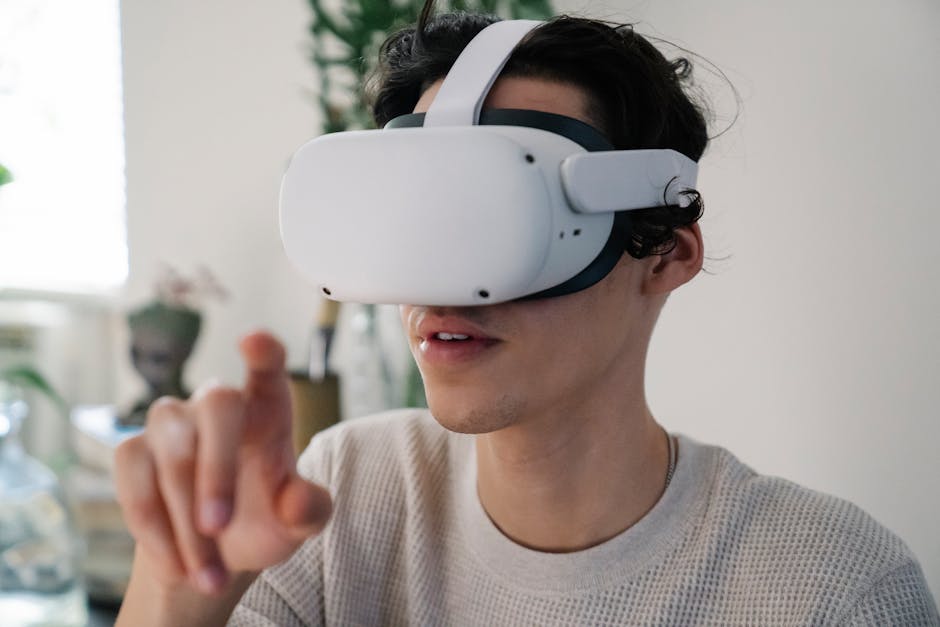Emerging Trends and Future Directions in UX Design
Step into the future of UX design with a focus on mobile-first strategies front and centre. Embrace voice interfaces that engage and entertain, while AI delivers personalised experiences tailored just for you. Explore augmented reality for immersive digital encounters that reshape user engagement. Make sure inclusivity is at the core to cater to all needs effortlessly. Remember ethical considerations to prioritise user well-being. Ready to explore the exciting world where sleek design, intuitive interfaces, and user-centric experiences reign supreme? The future of UX design awaits with innovative trends and endless possibilities!
Key Takeaways
- Embrace mobile-first design for on-the-go experiences.
- Integrate voice and conversational interfaces for personalised interactions.
- Utilise AI for tailored user experiences.
- Explore immersive AR for engaging digital content.
- Prioritise inclusive design for accessibility and diversity.
Mobile-First Design Strategies

Embrace the mobile world by prioritising sleek and intuitive design strategies that cater to the on-the-go user experience. In today’s fast-paced world, your website or app needs to be as quick and responsive as your morning coffee order. Responsive layouts aren’t just a trend; they’re a necessity if you want to keep users engaged.
No one has the patience for a website that takes longer to load than a sloth crossing the road. Useability testing is your best friend here. Don’t just assume your design works; make sure it does. Performance optimisation is key. If your site is sluggish, users will bounce off faster than a kangaroo on a trampoline.
User engagement is the name of the game. Keep them interested, keep them scrolling, and keep them coming back for more. Remember, in the mobile world, convenience is king, and your design should bow down to serve its royal highness – the user.
Voice and Conversational Interfaces

In the domain of UX design, engaging with users through voice and conversational interfaces is akin to having a lively chat with a tech-savvy genie. Natural language processing has revolutionised the way we interact with technology, making conversations with our devices more intuitive and engaging than ever before.
User Engagement:Conversational interfaces create a personalised experience, keeping users hooked and coming back for more.
Conversational Tone:The witty banter and sarcasm injected into these interfaces make interactions more enjoyable and human-like.
Effortless Interaction:With voice commands, tasks are completed at the speed of sound, leaving users feeling like they possess magical powers.
Learning Curve:Embracing these interfaces might feel strange at first, but once you get the hang of it, you’ll wonder how you ever lived without them.
Personalisation and AI Integration

Engage with the future of UX design by allowing personalisation and AI integration to tailor your digital experiences like a bespoke suit crafted by a tech-savvy fashionista.
Picture this: AI-driven customisation at your fingertips, moulding your online encounters to fit you like a glove. No more one-size-fits-all digital landscapes; it’s all about user-centred personalisation now.
Gone are the days of generic interfaces that treat everyone the same. With AI seamlessly integrated into the design process, your online journey becomes a personalised adventure, catering to your preferences before you even realise you have them. It’s like having a virtual assistant that knows you better than you know yourself.
Say goodby to the frustration of irrelevant content cluttering your screen. Embrace the era where every click, swipe, and tap is met with a tailored response, making your digital interactions smoother, more enjoyable, and, dare we say, downright delightful.
Augmented Reality Experiences

Step into a world where reality intertwines seamlessly with the digital world through enchanting augmented experiences that blur the lines of what you perceive as possible. Augmented Reality (AR) has taken the user experience landscape by storm, offering immersive interactions and interactive environments that captivate and engage users in ways never imagined before.
Here’s a glimpse into the alluring world of AR experiences:
-
Immersive Experiences: Explore a world where digital elements blend flawlessly with your surroundings, creating a truly engaging experience like no other.
-
Interactive Environments: Engage with virtual objects as if they were right in front of you, bringing a whole new level of excitement and involvement to your UX journey.
-
Real-time Feedback: Receive instant feedback and responses as you interact with AR elements, making the experience feel dynamic and alive.
-
Personalised Engagement: Tailored experiences based on your preferences and behaviours create a unique and personalised journey through the augmented landscape.
In this evolving landscape, AR is reshaping how users engage with digital content, offering a glimpse into a future where boundaries between reality and imagination blur effortlessly.
Inclusive Design Practises

Imagine this: In the world of UX design, where augmented reality captivates the senses, the domain of inclusive design practises emerges as a beacon of empathy and accessibility. It’s not just about creating a visually appealing interface; it’s about ensuring that everyone, regardless of ability or background, can navigate and engage with your product seamlessly.
Accessibility isn’t just a buzzword; it’s a fundamental aspect of user experience.
Diversity isn’t just a checkbox to tick off; it’s a driving force behind innovative design principles. Embracing diverse perspectives leads to more inclusive and user-friendly products.
Designing with inclusivity in mind doesn’t just benefit a specific group; it enhances the experience for all users. After all, who wouldn’t want a product that caters to their needs effortlessly?
Ethical UX Considerations

Ah, ethical considerations in UX design – a topic as intriguing as it’s essential.
Let’s chat about privacy, darling. How transparent is your design when it comes to user data?
And of course, let’s not forget the piècoe de résistance – focussing on user well-being.
It’s not just about making things pretty; it’s about making them ethical.
Privacy in UX
Traversing the intricate landscape of privacy concerns in UX design requires a delicate balance between user empowerment and ethical responsibilities. When it comes to data protection and user consent, treading lightly is key to ensuring users feel both secure and in control of their information.
Here are some key considerations to keep in mind:
-
User Control: Providing clear options for users to manage their privacy settings empowers them to make informed choices about their data.
-
Transparency: Being upfront about how user data is collected, stored, and used builds trust and fosters a sense of transparency.
-
Minimisation: Collecting only the data necessary for the functionality of the system demonstrates respect for user privacy.
-
Security Measures: Implementing robust security measures safeguards user data and instils confidence in the platform’s reliability.
Transparency in Design
Exploring the domain of ethical UX considerations, particularly in transparency within design, demands a keen eye for balancing user trust and information disclosure. In the intricate dance of user trust and design integrity, transparency takes centre stage.
Imagine a world where every design decision is shrouded in mystery, leaving users to navigate a digital labyrinth without a guiding light. That world isn’t only frustrating but also a breeding ground for suspicion and mistrust.
User trust is the backbone of any successful product, and transparency is the glue that holds it together. It’s like a magic show where the magician reveals their secrets – suddenly, the audience is in awe of the skill and craftsmanship behind the illusions.
In the domain of UX design, transparency is your secret weapon, your ticket to building lasting relationships with users based on honesty and integrity. So, next time you craft a design, remember, transparency isn’t just a buzzword; it’s the key to opening a world of user trust and design excellence.
User Well-being Focus
Explore the ethical domain of UX design, where the focus shifts towards prioritising user well-being amidst the digital landscape’s tumultuous waters.
In a world where every app notification competes for your attention and every website tries to keep you scrolling, it’s essential to contemplate the impact on mental health and emotional well-being in the domain of user experience.
Prioritise user mental health over engagement metrics.
Design interfaces that promote emotional well-being.
Implement user-centred design principles for a positive impact.
Advocate for ethical practises that prioritise user well-being.
It’s no longer just about making a website look pretty or an app easy to navigate. User-centred design now explores deeper, considering the psychological effects of digital interactions.
Conclusion
As you navigate the ever-changing landscape of UX design, remember to embrace the mobile-first mindset like a designer possessed.
Don’t forget to sprinkle in some conversational interfaces for that extra dash of user engagement.
And hey, why not toss in a pinch of AI integration for good measure?
The future of UX design is brighter than a thousand suns, so go forth and create experiences that are out of this world!
Contact us to discuss our services now!
